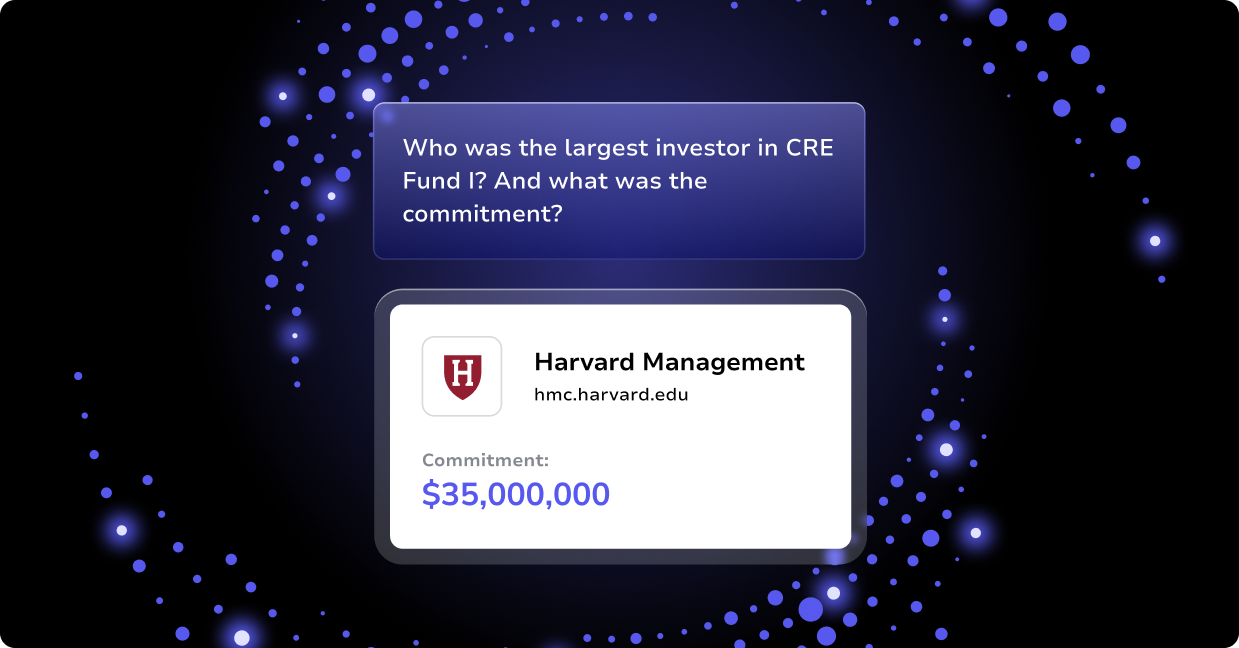In this blog, we’ll discuss how to formulate an effective strategy for efficiently managing and accessing your private equity data.
Data is only as valuable as it is accessible and understandable. Without an effective way to manage information, it can very quickly become “noise.” And in some ways, that’s worse than not having the data at all, since it can hide valuable insights that you might otherwise have discovered.
To get the most out of your private equity data, take these four steps:
Step 1: Focus on Private Equity data problems you need to solve.
Start by looking at your organization’s business goals in order to identify what’s working and what needs improvement. And try to view things as an outsider would. It’s common—and probably the default mindset—to see the way things are as the way they should be, even if that’s not the case.
To clearly identify any gaps that should be addressed by a more effective private equity data management strategy, ask yourself:
- Which part(s) of our operations would be best served by more effective data capabilities?
- Who are the stakeholders who stand to benefit from a data strategy? How do they benefit? Why is the strategy beneficial?
- Where are there problems in our ability to generate and capture all the data we need?
- Which processes could be streamlined or better informed by data?
- What data would we like to have but currently don’t?
- Where could technology be used to facilitate internal processes that may be generating data that isn’t currently captured?
- Where and how do we currently store data?
- How usable is our data in its current format?
- Who do we depend upon to make our data usable?
Step 2: Understand your workflows.
Once you have a better feel for what you are trying to accomplish, consider where potential problems may occur and how best to address them. Where do your processes break down?
Here again, if your inclination is to say, “I think we’re good,” your perspective may not be entirely bias-free. It’s very rare to find an organization whose processes simply can’t be improved. There are always ways to streamline workflows, and in some cases, a major overhaul may be called for.
Looking at your current workflow, evaluate how you:
- Access and/or connect to data
- Prepare data to be properly analyzed
- Perform analyses on and/or consume data
It’s important that you not take any shortcuts here. You’ve got to be sure you can trace the path that data follows from the moment it’s received or generated to the point where it’s been used as appropriate and is now stored for potential future uses. This has to include every stop or operation along the way.
Step 3: Dip your toe into Private Equity Data analytics.
Chances are, your current process is cumbersome and relies on manual input into disconnected systems. Raise your hand if your analysts are relying heavily on Excel spreadsheets? And raise it again if you consistently see #REF!
Today’s analytics solutions make it possible for business users with no technical skills to perform complex private equity data analyses in real-time and very intuitively. This saves you and your organization valuable time and resources.
With tools that allow you to access, prepare, and consume data more easily, analysts can make more efficient use of their time and talents—offering more strategic value to your firm and helping you differentiate from the competition.
Step 4: Get ready to demo private equity technology.
Now that you have a better idea of the benefits that more effectively managed data can provide your organization and what you are looking for in a solution, it’s time to explore what’s available in the marketplace.
There are solutions that bring together data from disparate sources in one place, then model the combined information to establish a “single source of truth” for all of the data across all of the systems. Even better, the right solution can connect to the data systems already in place, with no need to export or upload information, simplifying the process. In that way, everyone on your team has access to the same relevant, up-to-date information, anytime and from anywhere.
Solutions that allow you to connect and use multiple databases provide the best of both worlds: flexibility and customization. Effective use of data, coupled with a technology solution that is specialized for private equity firms, can help organizations significantly improve their use of time and resources, increasing efficiency and simplifying processes.
Altvia has developed a data and technology platform specifically for the needs of private equity firms:
The base of a modern technology platform is built on a single source of truth that supports key workflows, contact management, relationship mapping, and the automation of key activities (ie. emails and task assignments)
The intelligence layer connects, normalizes, and displays data across sources (ie CRM, Accounting, 3rd Party) to drive speed to insight.
Distribute personalized content like PPMs, K1s, and Capital calls with ease and enhance the investor experience with a secure portal underpinned by data-rich analytics.




